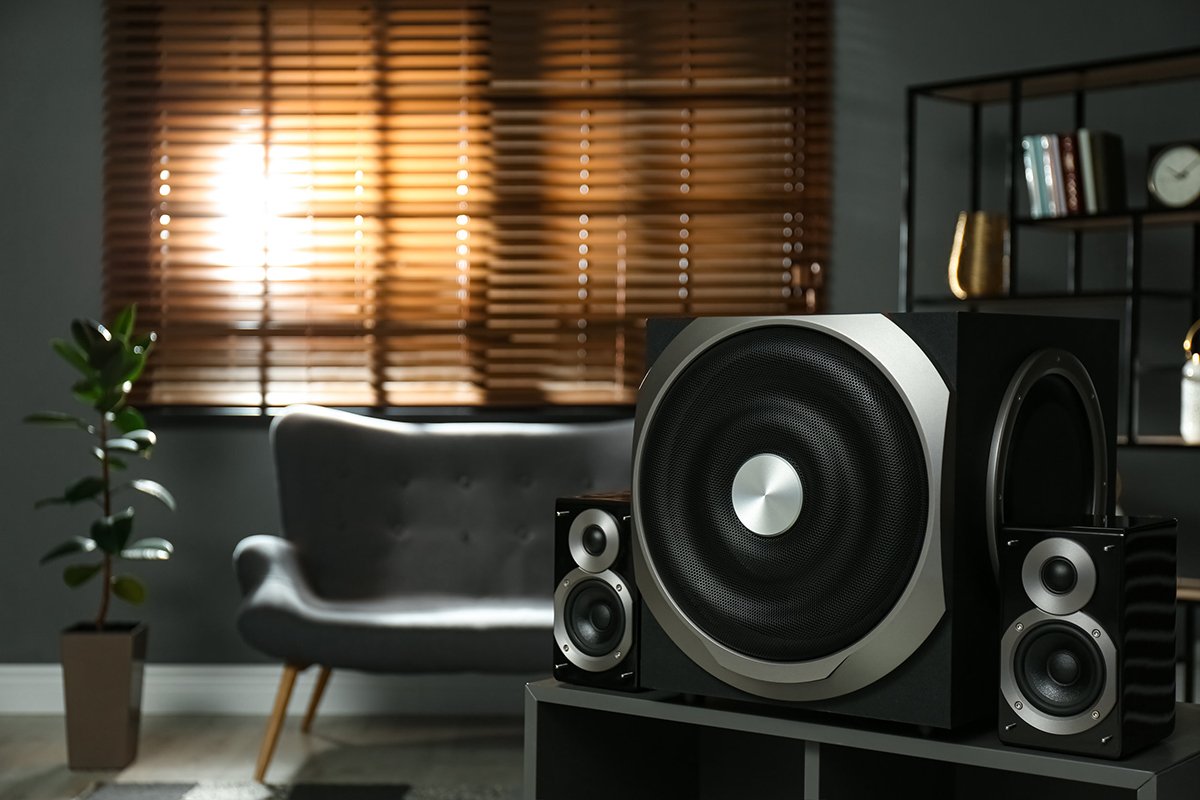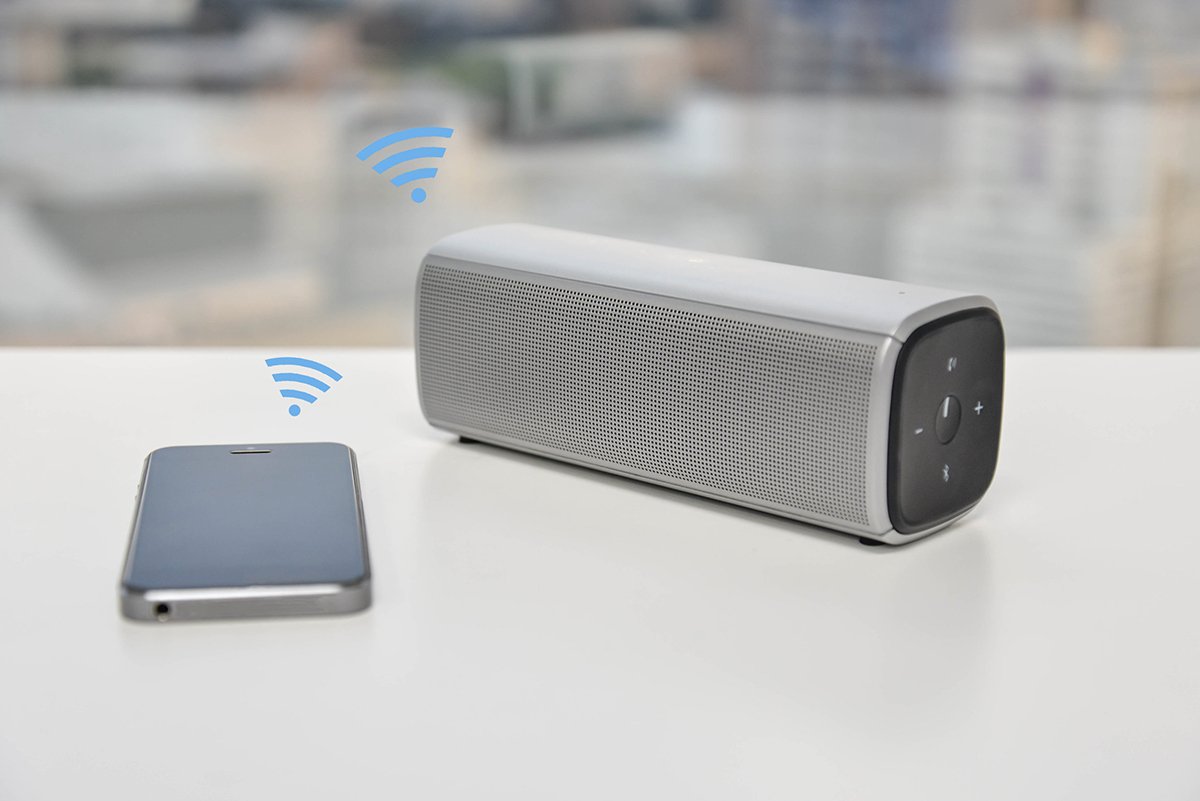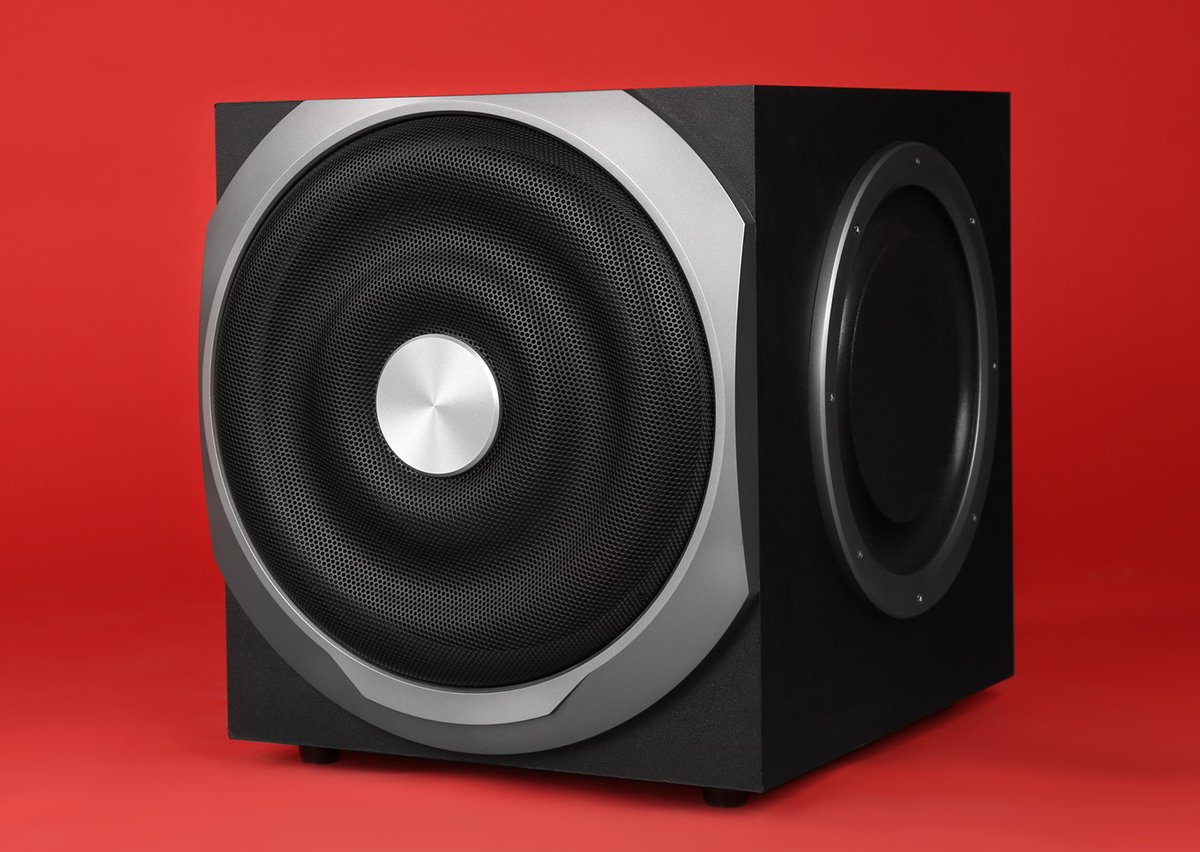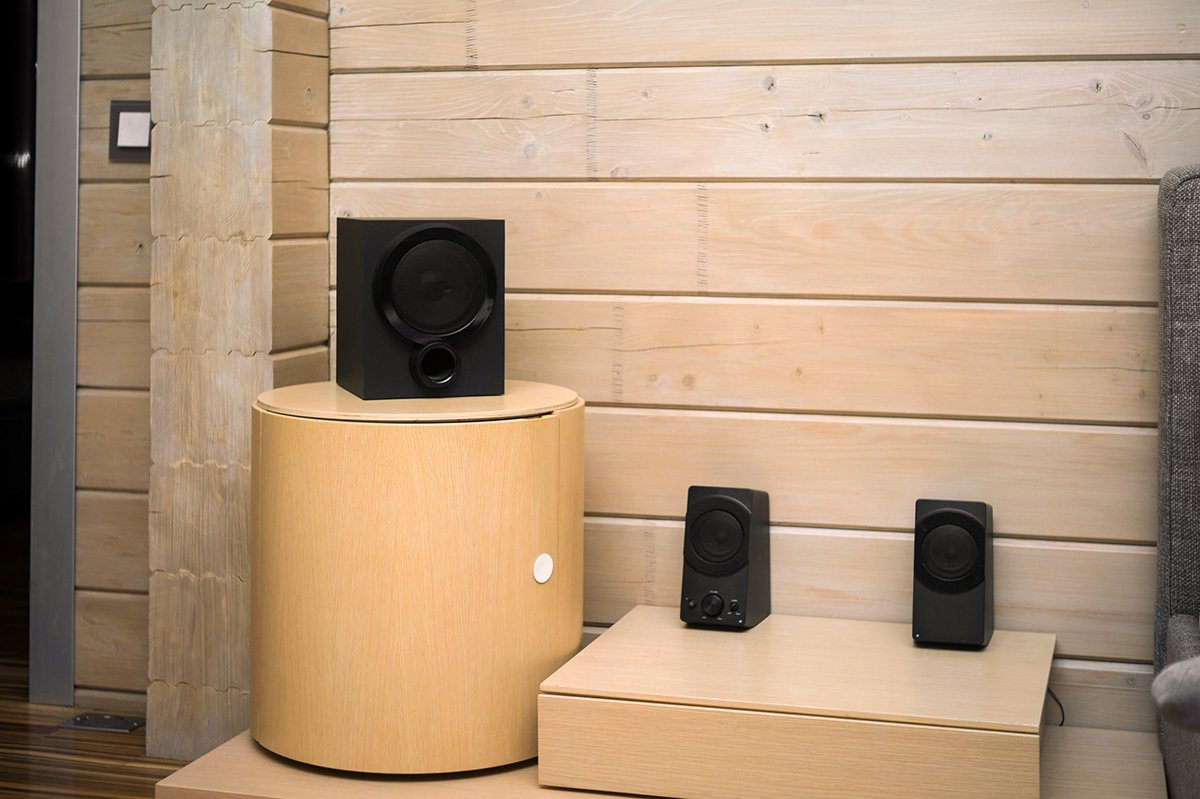Subwoofers improve a speaker’s bass, sound quality, and clarity. They’re usually easy to connect to a regular speaker. But what if you have a Bluetooth speaker?
You can connect a subwoofer to a Bluetooth speaker as long as it’s a Bluetooth subwoofer. If your non-Bluetooth subwoofer supports an auxiliary connection, you can connect it to your audio source with an auxiliary cable. The subwoofer and Bluetooth speaker will then play simultaneously.
This article will discuss whether or not you can connect a subwoofer to a Bluetooth speaker. I’ll also cover the benefits of using a subwoofer with a Bluetooth speaker, and explain how to connect the two.
Page Contents
Are Subwoofers and Bluetooth Speakers Compatible?
Bluetooth technology allows devices to communicate via a radio frequency over a short distance. Bluetooth speakers receive digital audio from a source (typically a smartphone, computer, or television) and convert it into sound waves.
They’re good at producing audio waves with high (treble) or mid-range frequencies but can’t create low-frequency sound waves—often more noticeable in music with a lot of bass or sub-bass notes, the deepest and lowest music notes.
Subwoofers are a class of speakers that let you hear low-frequency sound waves.
Only certain kinds of subwoofers are compatible with Bluetooth speakers. If you want to connect a subwoofer to a Bluetooth speaker, it must use Bluetooth technology. Alternatively, you can use an audio cable to connect a non-Bluetooth subwoofer to your audio source.
A non-Bluetooth subwoofer and a Bluetooth speaker can simultaneously play audio from the same source, but they won’t be connected.
Most Bluetooth speakers run on AC power and can be plugged into an outlet. However, if you want to connect another device to this kind of speaker, it must be over a Bluetooth (and not a wired) connection.
This Bestisan Powered Subwoofer from Amazon.com, for example, has Bluetooth capability and will connect to a Bluetooth speaker.
Benefits of Using a Subwoofer With a Bluetooth Speaker
Below are some of the main benefits of using a subwoofer with a Bluetooth speaker:
- Subwoofers let you hear bass and sub-bass sound waves. Although some large Bluetooth speakers can produce low-frequency audio waves, their ability is limited. Connecting a subwoofer lets you enjoy a song’s complete audio range. This is particularly helpful if you enjoy music with a lot of bass and sub-bass.
- They can improve sound clarity. If you enjoy listening to music with a lot of bass or sub-bass, using a subwoofer to produce low-frequency audio waves can improve the sound quality.
- Subwoofers can reduce distortion. When playing audio with only one Bluetooth speaker, all the audio’s demands are placed on a single unit, sometimes resulting in sound distortion. Pairing a subwoofer with the speaker distributes the workload.
- They help produce a surround sound experience. For a lovely surround sound television or music experience, the two devices work together to fill the room with multi-frequency sound waves.
How Do I Connect a Subwoofer to a Bluetooth Speaker?
If you have a subwoofer and a Bluetooth speaker, here’s how you connect them:
- Ensure that the devices are close together.
- Connect both devices to a power source.
- Activate Bluetooth on the audio source.
- Press the Bluetooth pairing button on the subwoofer.
- Wait for the Bluetooth pairing light to stop flashing.
- Perform a sound check.
Let’s take a look at these steps in more detail:
1. Ensure That the Devices Are Close Together
For two devices to connect over a Bluetooth connection, they need to be placed close together.
A Bluetooth-enabled device can communicate with another one if it is within 30 feet (10 meters). This range sometimes varies depending on the presence of obstacles (e.g., walls), and the closer the devices are, the better.
Once your subwoofer and Bluetooth speaker are close to each other, you can start the pairing process.

2. Connect Both Devices to a Power Source
Bluetooth speakers and subwoofers usually work with an electric power source, but some are battery-powered.
Once you have inserted the batteries or connected them to a power source, switch both devices to on mode. That usually involves pressing a button or shifting a switch from “standby” or “off” mode to “on.”
3. Activate Bluetooth on the Audio Source
Your audio source can be your television, computer, smartphone, or tablet. Activate the Bluetooth function on the audio source so that digital audio reaches both devices.
If your audio source is a laptop, TV, or computer, follow these steps:
- Click on the start button in the bottom toolbar and select “settings” (for a television, you would use the remote control to navigate)
- Select “Devices” and then “Bluetooth and other devices.”
- Click the “on” button to activate Bluetooth
Here’s how to activate Bluetooth on an Android smartphone or tablet:
- From the home screen, swipe down to open the “quick settings” panel
- Tap the Bluetooth icon and select “on” to activate it (the button should go from being grayed out to a green color)
If you have an Apple device, you can activate Bluetooth as follows:
- Tap the “settings” icon on your home screen
- Scroll down to “Bluetooth” and tap to select
- Toggle the Bluetooth button to the right to activate it (the button should go from being grayed out to a green color)
4. Press the Bluetooth Pairing Button on the Subwoofer
Now that the audio source’s Bluetooth function has been activated, it can detect nearby Bluetooth-enabled devices.
Press the Bluetooth pairing button to pair the subwoofer to the Bluetooth speaker. It’s usually the button with the Bluetooth logo—a symbol combining “H” and “B.”
The subwoofer will begin searching for other Bluetooth devices in its range. A flashing light around or on the Bluetooth activation button indicates that it is trying to pair with another device.
The pairing process typically takes a few minutes and is not immediate.

5. Wait for the Bluetooth Pairing Light To Stop Flashing
When the Bluetooth pairing light stops flashing and has a solid light, it has successfully paired with the speaker.
Some Bluetooth devices make a beeping when pairing is complete, but it is worth consulting your subwoofer’s user manual for specific details.
Pairing is usually quick, but sometimes it can take up to five minutes. If you do not have any success by then, repeat the process. A common pairing failure problem is if the devices are not within Bluetooth range.
6. Perform a Sound Check
Performing a sound check is the final step. Since subwoofers are great at playing low-frequency sounds, playing a song with plenty of bass is an excellent way of performing a comprehensive sound check.
You can check out these examples of bass-rich songs such as “Another One Bites The Dust” by Queen or “Sail” by AWOLNATION:
https://www.youtube.com/watch?v=rY0WxgSXdEE
https://www.youtube.com/watch?v=tgIqecROs5M
Before playing the song, ensure that the volume on the audio source device is low so that it doesn’t overwhelm you. You can always gradually increase it if it’s too soft.
As you play the song from your audio source, approach the Bluetooth speaker and subwoofer separately to ensure that they’re both producing sound.
Connecting a Bluetooth Speaker and a Wired Subwoofer to an Audio Source
It’s easy to connect a wired subwoofer and a Bluetooth speaker to an audio source. Here’s how to do it:
- Lower the volume on the audio source and subwoofer. A subwoofer’s volume control usually is a dial located at the back. Lowering the sound will make the sound check a more comfortable experience.
- Find the subwoofer’s input cable and connect it to the audio source. The input cable resembles a headphone cable, and all new subwoofers come with an input cable (unless they’re Bluetooth subwoofers).
- Turn the subwoofer on. You can do this by setting the switch to “on” mode.
- Activate Bluetooth on both devices and pair them. After enabling Bluetooth on your audio source (in the settings), press the Bluetooth button on the speaker. During pairing, a light will flash and then stop once the process is complete. The pairing process can take up to five minutes.
- Perform a sound check. Play a song and listen to the sound coming from each device. If you can hear low-frequency music notes, the subwoofer is probably working as it should.
If the subwoofer is not playing the audio, check the volume. Other subwoofer problems include faulty input cables or fuses, which are inexpensive and easy to replace.

Can I Improve a Bluetooth Speaker’s Sound Quality With No Subwoofer?
Using a subwoofer is an excellent way to enhance your Bluetooth speaker’s sound quality, but you may not have the money or energy to use one.
You can improve your Bluetooth speaker’s sound quality by trying the following:
- Play saved files instead of streaming.
- Make sure the speaker is within the recommended range.
- Experiment with speaker locations.
- Check for obstructions.
Let’s take a look at these suggestions in more detail:
1. Play Saved Files Instead of Streaming
Playing digital audio content directly from the internet can reduce the Bluetooth speaker’s sound quality due to compression or buffering.
Bluetooth devices compress digital audio before playing it. The exact process happens when you stream music online, resulting in double compression and reduced quality.
Buffering is a common problem with streaming music or listening to the radio online. It can cause the music to stop and start and make crackling sounds. Unless you have a high-speed internet connection, it’s best to use Bluetooth speakers for saved music files.
2. Make Sure the Speaker Is Within the Recommended Range
Bluetooth devices should operate optimally within 30 feet (10 meters) of the Bluetooth source.
The recommended range can vary according to the Bluetooth device, so it’s worth checking the manufacturer’s recommendations in the user manual.
Even if your Bluetooth speaker is within range, moving it closer can strengthen the connection and improve the sound quality.
3. Experiment With Speaker Locations
Different speaker locations can affect the sound quality.
A hard surface can reflect the Bluetooth speaker’s sound waves, causing it to echo and sound flat. When the volume is turned up, the speaker’s vibrations against the hard surface interfere with the audio content.
Place a tablecloth or small piece of carpet underneath to absorb the sound waves and make the output sound fuller. Some people find that placing their Bluetooth speaker on the floor can improve the sound quality, especially if it’s a carpeted surface.
To increase your speaker’s volume without playing it at full blast, try placing it in a corner or close to the wall. Walls are natural sound amplifiers and have a surround sound effect.

4. Check for Obstructions
Obstructions can be physical or digital and can affect the sound quality.
Physical obstructions include heavy furniture and appliances. You can resolve the problem by moving the speaker to the other side of the obstacle.
Digital Bluetooth obstructions include the following:
- Cordless phones
- Bluetooth headphones
- Smartphone or tablet apps
- Microwaves
- Television streaming devices
These devices typically use the same frequency as Bluetooth. So, if they’re too close to your Bluetooth speakers, they can cause interference and decrease the sound quality. Switching nearby devices off improves your Bluetooth speaker sound.
Smartphone and tablet apps that track your location can also interfere with your speaker’s Bluetooth connection. An easy way to fix this is to disallow location tracking unless you’re actively using it in an app.
Conclusion
Connecting a Bluetooth speaker and subwoofer is easy and only takes a few minutes.
If your subwoofer doesn’t have Bluetooth capability, you can connect it to your audio source with a cable. After pairing your Bluetooth speaker to the audio source, audio will play out on both devices.
Subwoofers offer many benefits as they can play low-frequency sounds unlike regular speakers, which play only mid to high-level frequency sound waves.
If you do not have a subwoofer, you can improve your Bluetooth speaker’s sound quality by playing only saved audio files and experimenting with the speaker’s location.

